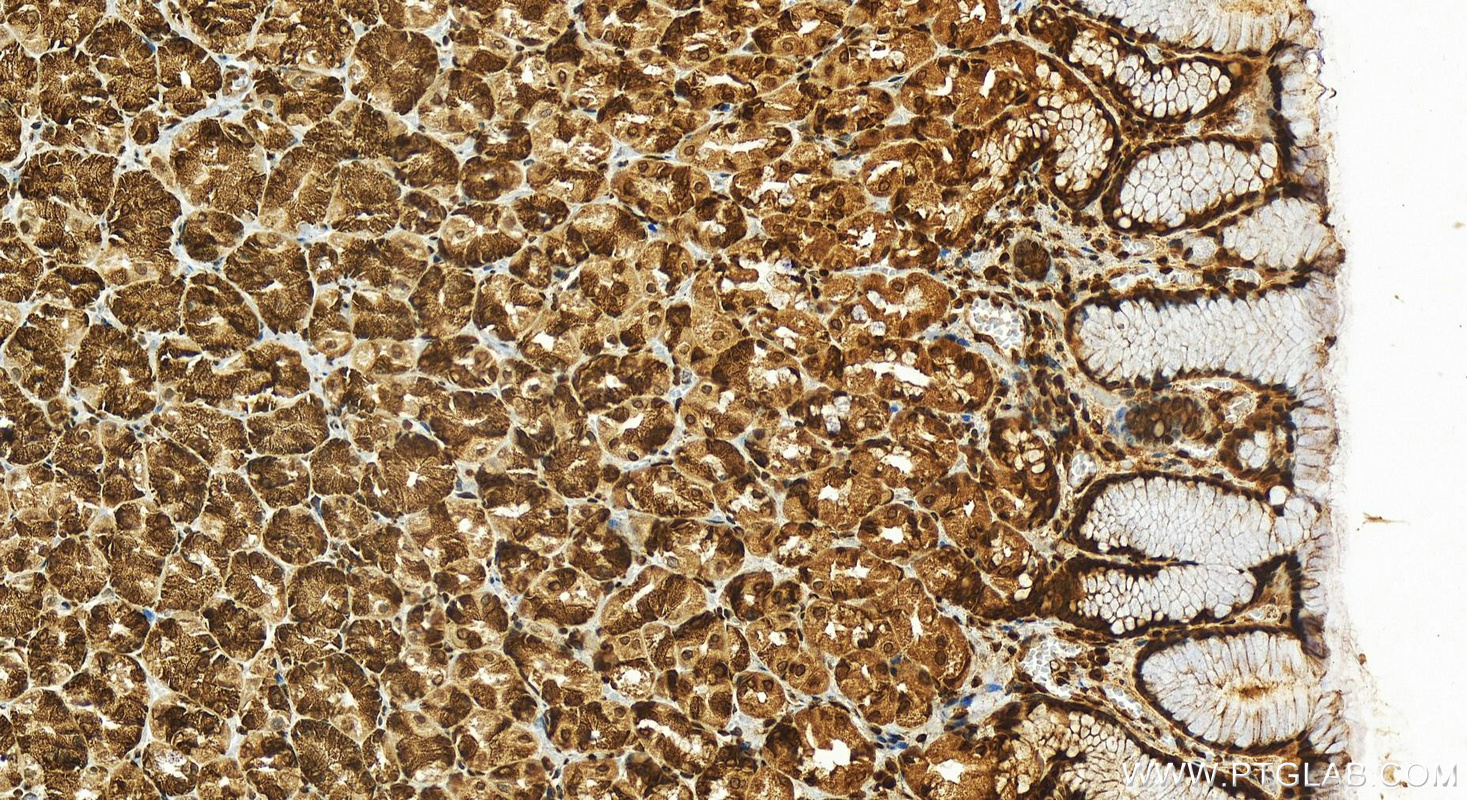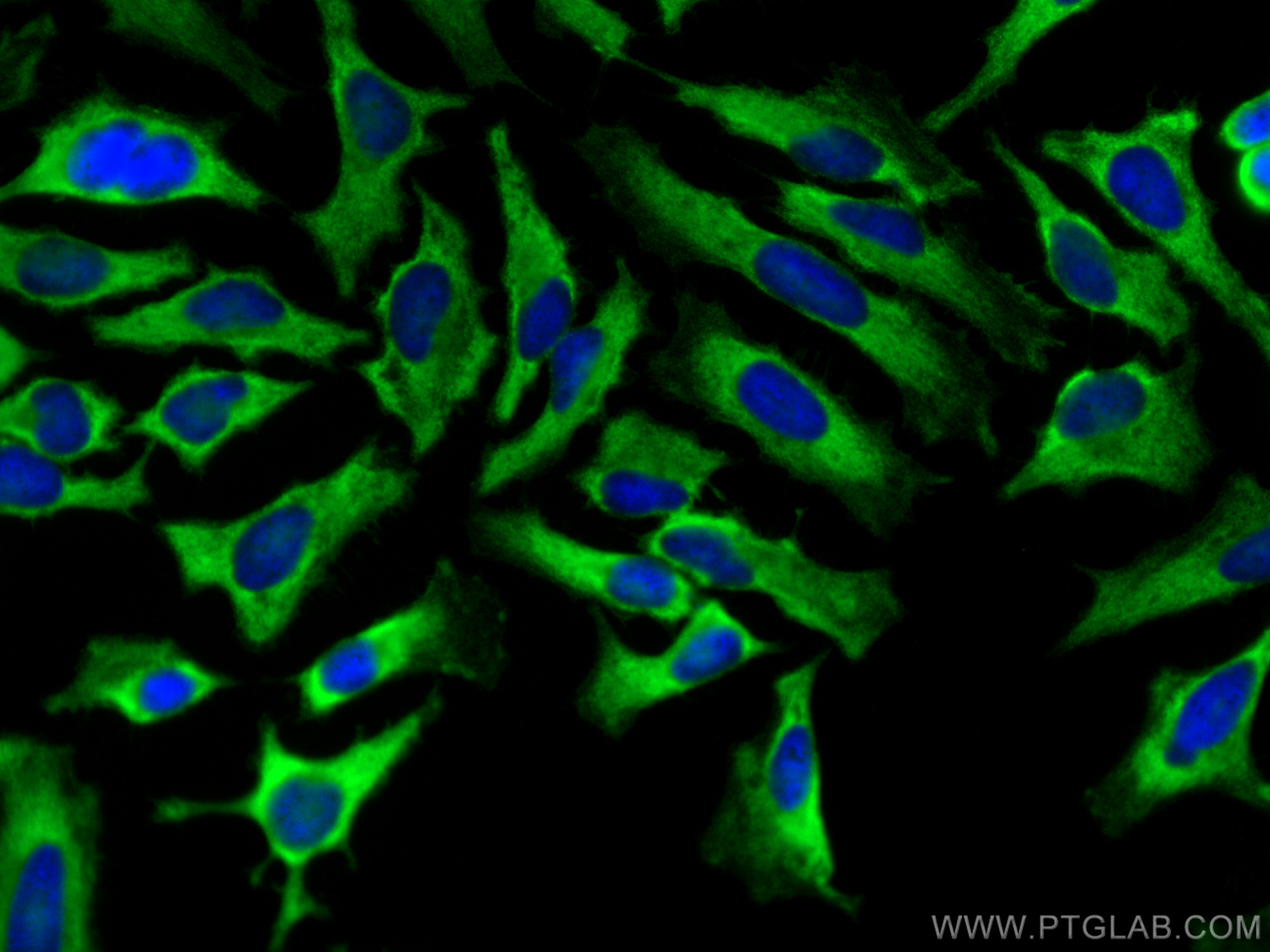SRP19 Polyclonal antibody
SRP19 Polyclonal Antibody for WB, IHC, IF/ICC, IP, ELISA
Host / Isotype
Rabbit / IgG
Reactivity
human, mouse, rat
Applications
WB, IHC, IF/ICC, IP, ELISA
Conjugate
Unconjugated
Cat no : 16033-1-AP
Synonyms
Validation Data Gallery
Tested Applications
| Positive WB detected in | human liver tissue, A549 cells, HeLa cells, K-562 cells, mouse kidney tissue, mouse liver tissue, mouse ovary tissue, Raji cells |
| Positive IP detected in | mouse kidney tissue |
| Positive IHC detected in | human stomach tissue Note: suggested antigen retrieval with TE buffer pH 9.0; (*) Alternatively, antigen retrieval may be performed with citrate buffer pH 6.0 |
| Positive IF/ICC detected in | HeLa cells |
Recommended dilution
| Application | Dilution |
|---|---|
| Western Blot (WB) | WB : 1:500-1:2000 |
| Immunoprecipitation (IP) | IP : 0.5-4.0 ug for 1.0-3.0 mg of total protein lysate |
| Immunohistochemistry (IHC) | IHC : 1:50-1:500 |
| Immunofluorescence (IF)/ICC | IF/ICC : 1:50-1:500 |
| It is recommended that this reagent should be titrated in each testing system to obtain optimal results. | |
| Sample-dependent, Check data in validation data gallery. | |
Published Applications
| WB | See 5 publications below |
| IF | See 1 publications below |
| IP | See 1 publications below |
Product Information
16033-1-AP targets SRP19 in WB, IHC, IF/ICC, IP, ELISA applications and shows reactivity with human, mouse, rat samples.
| Tested Reactivity | human, mouse, rat |
| Cited Reactivity | human |
| Host / Isotype | Rabbit / IgG |
| Class | Polyclonal |
| Type | Antibody |
| Immunogen | SRP19 fusion protein Ag8903 |
| Full Name | signal recognition particle 19kDa |
| Calculated Molecular Weight | 144 aa, 16 kDa |
| Observed Molecular Weight | 18-25 kDa |
| GenBank Accession Number | BC010947 |
| Gene Symbol | SRP19 |
| Gene ID (NCBI) | 6728 |
| RRID | AB_11041714 |
| Conjugate | Unconjugated |
| Form | Liquid |
| Purification Method | Antigen affinity purification |
| Storage Buffer | PBS with 0.02% sodium azide and 50% glycerol pH 7.3. |
| Storage Conditions | Store at -20°C. Stable for one year after shipment. Aliquoting is unnecessary for -20oC storage. 20ul sizes contain 0.1% BSA. |
Background Information
The signal recognition particle (SRP) is one of the few functional small RNP particles. The SRP couples the synthesis of membrane and secretory proteins across or into the endoplasmic reticulum (ER) membrane in eukaryotes, as well as across the bacterial plasma membrane, and chloroplast thylakoid membranes. The mammalian SRP is composed of a 7S (or 7SL) RNA and six different proteins, SRP9, SRP14, SRP19, SRP54, SRP68 and SRP72. All of the components of SRP, including SRP RNA, participate directly in the overall protein targeting process. SRP19 binds directly to 7S RNA and mediates binding of the 54 kDa subunit of the SRP. SRP19 was shown to significantly enhance SRP54 attachment to helix 8 of 7SL RNA. Binding of SRP19 leads to restructuring of both helix 6 and 8, causing local changes at the SRP54-binding site. This antibody is a rabbit polyclonal antibody raised against full length SRP19 of human origin.
Protocols
| Product Specific Protocols | |
|---|---|
| WB protocol for SRP19 antibody 16033-1-AP | Download protocol |
| IHC protocol for SRP19 antibody 16033-1-AP | Download protocol |
| IF protocol for SRP19 antibody 16033-1-AP | Download protocol |
| IP protocol for SRP19 antibody 16033-1-AP | Download protocol |
| Standard Protocols | |
|---|---|
| Click here to view our Standard Protocols |
Publications
| Species | Application | Title |
|---|---|---|
Nucleic Acids Res The pioneer round of translation ensures proper targeting of ER and mitochondrial proteins. | ||
Nucleic Acids Res SECIS-binding protein 2 interacts with the SMN complex and the methylosome for selenoprotein mRNP assembly and translation. | ||
PLoS One The CELF1 RNA-Binding Protein Regulates Decay of Signal Recognition Particle mRNAs and Limits Secretion in Mouse Myoblasts. | ||
Elife The unfolded protein response and endoplasmic reticulum protein targeting machineries converge on the stress sensor IRE1. |













